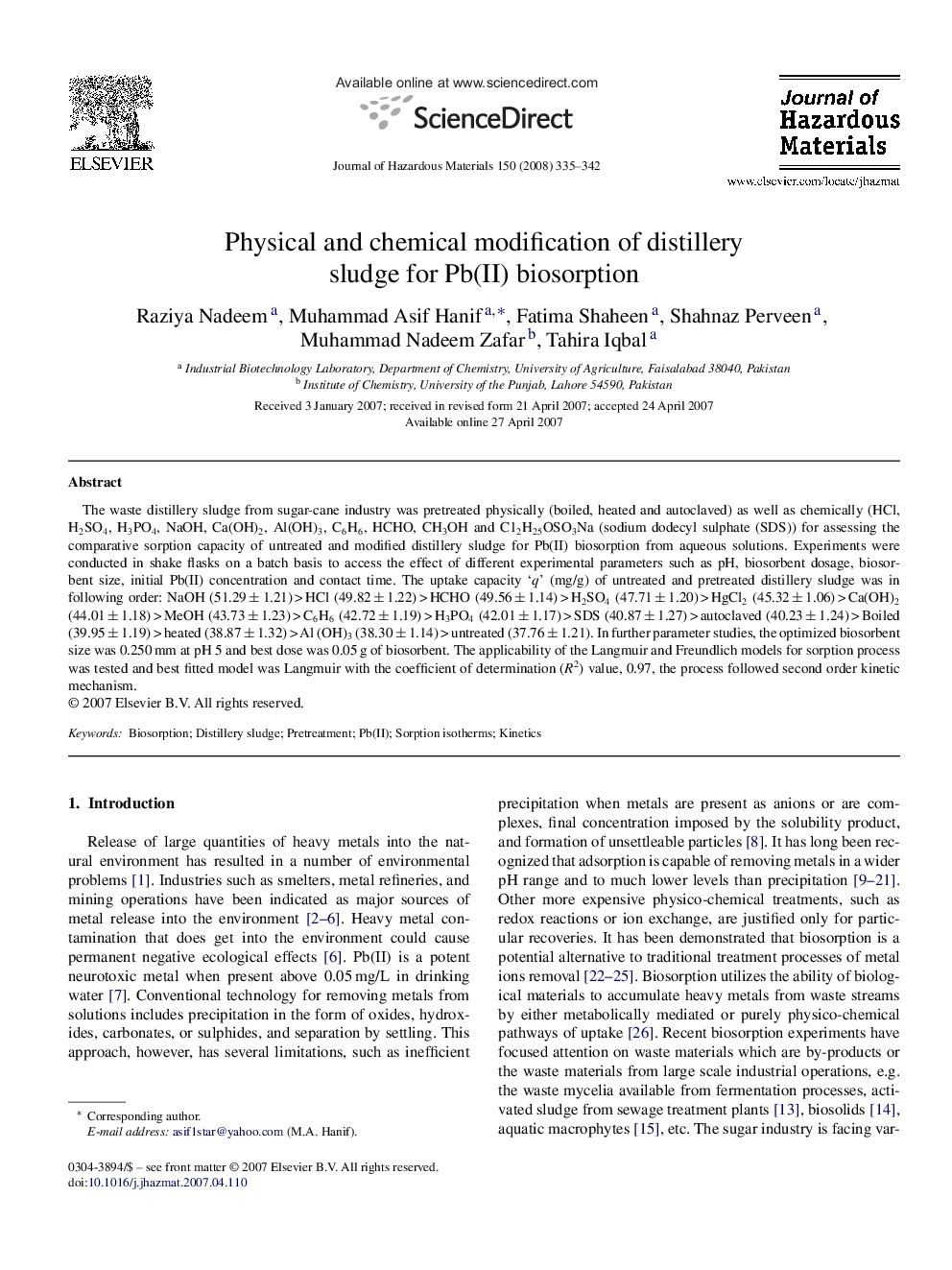| Article ID | Journal | Published Year | Pages | File Type |
|---|---|---|---|---|
| 583965 | Journal of Hazardous Materials | 2008 | 8 Pages |
Abstract
The waste distillery sludge from sugar-cane industry was pretreated physically (boiled, heated and autoclaved) as well as chemically (HCl, H2SO4, H3PO4, NaOH, Ca(OH)2, Al(OH)3, C6H6, HCHO, CH3OH and C12H25OSO3Na (sodium dodecyl sulphate (SDS)) for assessing the comparative sorption capacity of untreated and modified distillery sludge for Pb(II) biosorption from aqueous solutions. Experiments were conducted in shake flasks on a batch basis to access the effect of different experimental parameters such as pH, biosorbent dosage, biosorbent size, initial Pb(II) concentration and contact time. The uptake capacity 'q' (mg/g) of untreated and pretreated distillery sludge was in following order: NaOH (51.29 ± 1.21) > HCl (49.82 ± 1.22) > HCHO (49.56 ± 1.14) > H2SO4 (47.71 ± 1.20) > HgCl2 (45.32 ± 1.06) > Ca(OH)2 (44.01 ± 1.18) > MeOH (43.73 ± 1.23) > C6H6 (42.72 ± 1.19) > H3PO4 (42.01 ± 1.17) > SDS (40.87 ± 1.27) > autoclaved (40.23 ± 1.24) > Boiled (39.95 ± 1.19) > heated (38.87 ± 1.32) > Al (OH)3 (38.30 ± 1.14) > untreated (37.76 ± 1.21). In further parameter studies, the optimized biosorbent size was 0.250 mm at pH 5 and best dose was 0.05 g of biosorbent. The applicability of the Langmuir and Freundlich models for sorption process was tested and best fitted model was Langmuir with the coefficient of determination (R2) value, 0.97, the process followed second order kinetic mechanism.
Related Topics
Physical Sciences and Engineering
Chemical Engineering
Chemical Health and Safety
Authors
Raziya Nadeem, Muhammad Asif Hanif, Fatima Shaheen, Shahnaz Perveen, Muhammad Nadeem Zafar, Tahira Iqbal,
